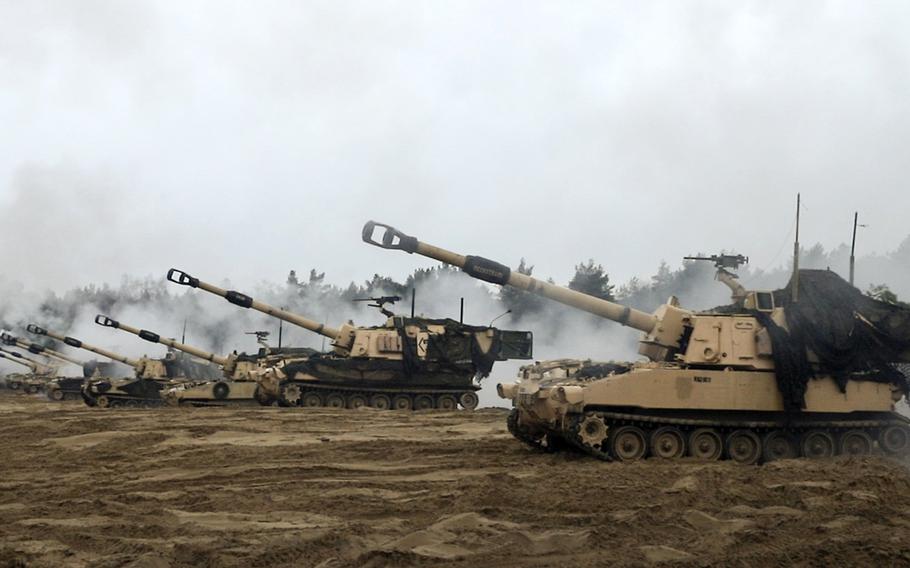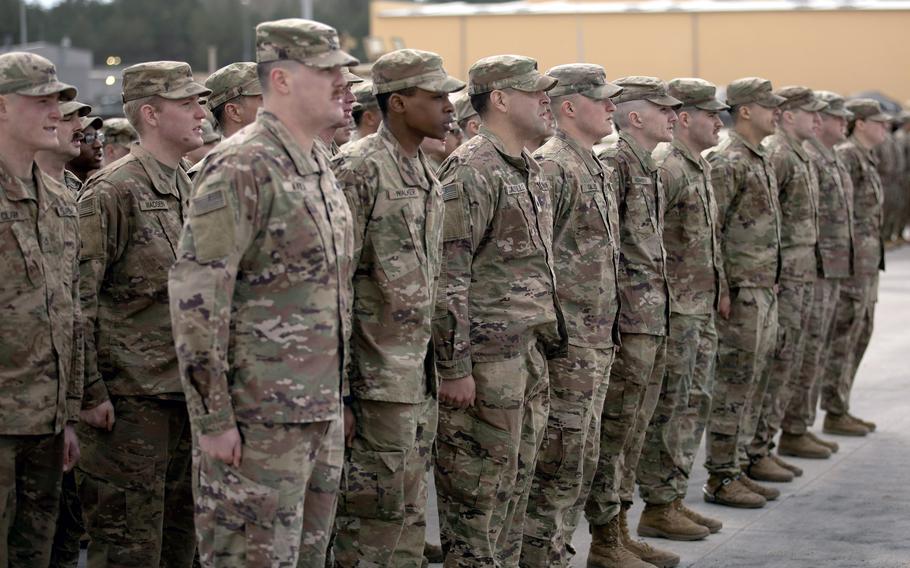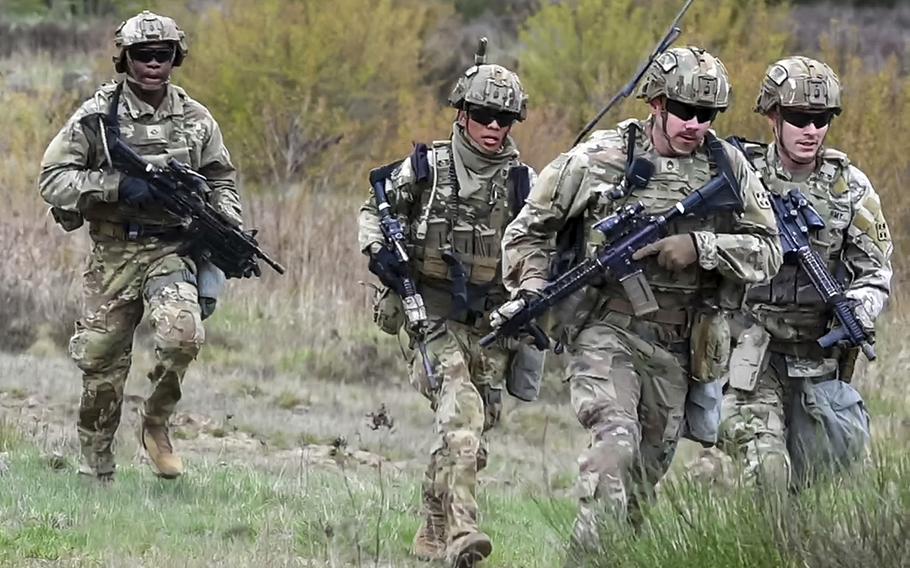
Paladins belonging to the 4th Battalion, 27th Field Artillery Regiment conduct their final fire missions during training at Forward Operating Station Torun, Poland, on Feb. 22, 2024. A U.S. Army War College study argues that replacing unit rotations from stateside with units based permanently in Europe would encourage European allies to allocate more of their weapon stockpiles to Ukraine. (Trevares Johnson/U.S. Army)
STUTTGART, Germany — Turning U.S. Army rotational brigades into units permanently based in Europe could give the security assurances needed to nudge allies into playing a larger role in supporting Ukraine, a new U.S. Army War College study asserts.
The report, released Thursday, said U.S. policymakers should consider making permanent the deployments of armored combat brigades that for the past decade have been the centerpiece of Army efforts to bolster defenses along NATO’s eastern flank.
European reluctance to dig deeper into domestic military stocks is related to allies’ security concerns, according to the report, which also noted that many countries on the Continent are struggling to balance equipping their own military with ramping up weapons production for Ukraine.
“American forward-stationed military forces can play a critical role in reassuring allies they can take on greater risk and dig deeper for Ukraine,” wrote Army War College researchers John Deni and Lisa Aronsson.
The change would have the added benefit of saving the U.S. money, the report said. Past U.S. Army War College research has shown that the long-standing practice of rotating armored brigades back and forth between the United States and Poland costs about $135 million more per brigade compared with the permanent basing of such units in Europe.

U.S. soldiers from 2nd Armored Brigade Combat Team, 1st Armored Division stand in formation during a transfer of authority ceremony in Drawsko Pomorskie, Poland, on April 2, 2024. Turning Army rotational brigades into units permanently based in Europe could give U.S. allies the security blanket they need to get them to dig deeper into their weapons stockpiles to arm Ukraine, according to an Army War College study. (Trevares Johnson/U.S. Army)
The latest study delves into the array of problems allies face when it comes to boosting weapons production on the Continent and solidifying that support for the long term.
The difficulties range from outdated laws that hinder defense industrial production to command-and-control flaws that leave other militaries unable to fill the role the United States plays in facilitating the flow of arms into Ukraine.
Since Russia’s full-scale 2022 invasion of Ukraine, allies have stepped up their support for Kyiv. While the United States remains the single largest donor, Europe is now collectively surpassing the U.S. in supplying Ukraine’s war effort.
Even so, “a Europe-only effort to assist Ukraine would clearly fail,” the report said.
Now three years into the war, the Pentagon also has grappled with its own defense industrial limitations and depleted stockpiles.
In the United States, support for Ukraine also has become a partisan issue, with former President Donald Trump opposing the extensive delivery of American weapons for Ukrainian defense.
But the U.S. Army War College authors concluded that success hinges on sustained U.S. involvement in Europe, noting that allies will not be able to increase their military support for Ukraine dramatically in the short term.

U.S. soldiers with the 3rd Armored Brigade Combat Team, 4th Infantry Division hurry to their vehicles during an exercise in Drawsko Pomorskie, Poland, in May 2022. Permanently basing U.S. Army brigades in Europe could help prompt allies to dig deeper into their weapons stockpiles to arm Ukraine, according to an Army War College study. (Tobias Cukale/U.S. Army)
The situation has created a set of tradeoffs for various countries depending on their respective threat perceptions. And in many of them, bureaucratic red tape stands in the way of getting industrial production onto a wartime footing, according to the analysts.
“European allies — even those closest to the Russian threat — appear unwilling or unable to implement a wartime approach to industrial production,” the report said.
Allies need legislation akin to the Defense Production Act in the U.S. that would allow governments to better direct the prioritization of specific defense contracts and procurement.
“European allies cannot continue supporting Ukraine or expand their assistance without significant adjustments,” the report said.